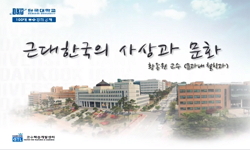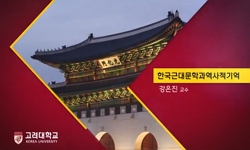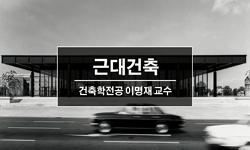From the end of the 19th century, the Japanese Buddhist Order, which came to Korea, established the missionary posts in an open ports carried out active religious and missionary activities. They imported building materials, statues of Buddha, Buddhist...
http://chineseinput.net/에서 pinyin(병음)방식으로 중국어를 변환할 수 있습니다.
변환된 중국어를 복사하여 사용하시면 됩니다.
- 中文 을 입력하시려면 zhongwen을 입력하시고 space를누르시면됩니다.
- 北京 을 입력하시려면 beijing을 입력하시고 space를 누르시면 됩니다.
https://www.riss.kr/link?id=A105966971
-
저자
최선일 (문화재청)
- 발행기관
- 학술지명
- 권호사항
-
발행연도
2018
-
작성언어
Korean
-
주제어
근대 ; 불교조각 ; 김복진 ; 일섭 ; 시찬 ; Modern ; Buddha statues ; Kim Bok-jin ; monk artist IlSeop ; Sichan
-
등재정보
KCI등재
-
자료형태
학술저널
-
수록면
91-109(19쪽)
-
KCI 피인용횟수
4
- DOI식별코드
- 제공처
-
0
상세조회 -
0
다운로드
부가정보
다국어 초록 (Multilingual Abstract)
As the missionary posts by Japanese temple were activated in Korea, Korean traditional main temples established the missionary posts in several cities. In the early days, the missionary posts was established by relocating Buddha statues, paintings, bells from its headquarters, but it began to create new statues and Buddha statues from the missionary posts, which was built in the 1930s. Kim Bok-jin, monk artist Ilseop and WanHo were the most famous masters in this period. In addition, Buddhist statues, which were made by monk Sichan, monk Chiik, Lee Sam-chae, and Seizaburo Maruyama[丸山淸三郞], were discovered.
There are 40 Buddha staues that show the date of production in the first half of the 20th century, and most of them are small Buddha statues that would be enshrined in missionary posts or a female temple. Around the time when Kim Bok-jin made a large Maitreya Buddha statue in Geumsan Temple in Gimje and Beopju Temple in Boeun in the mid 1930s, the Buddhist sculptures of the first half of the 20th century can be distinguished. In the first half of the 20th century, the Buddhist statue inherited the Buddhist image from the late Joseon Dynasty, the foreign style from Japan, and the hybrid style combining tradition and foreign elements coexist.
Kim Bok-jin's style of Buddha statues became an important model in the reconstruction of temples that were destroyed during the Korean War, and modern times were produced repeatedly and became an important form of Buddha statues.
From the end of the 19th century, the Japanese Buddhist Order, which came to Korea, established the missionary posts in an open ports carried out active religious and missionary activities. They imported building materials, statues of Buddha, Buddhist altar, utensils for offering directly from Japan, and as the demand for the main material of temple bell and drum increased in the 1910s, they gradually built workshops run by Japanese people.
As the missionary posts by Japanese temple were activated in Korea, Korean traditional main temples established the missionary posts in several cities. In the early days, the missionary posts was established by relocating Buddha statues, paintings, bells from its headquarters, but it began to create new statues and Buddha statues from the missionary posts, which was built in the 1930s. Kim Bok-jin, monk artist Ilseop and WanHo were the most famous masters in this period. In addition, Buddhist statues, which were made by monk Sichan, monk Chiik, Lee Sam-chae, and Seizaburo Maruyama[丸山淸三郞], were discovered.
There are 40 Buddha staues that show the date of production in the first half of the 20th century, and most of them are small Buddha statues that would be enshrined in missionary posts or a female temple. Around the time when Kim Bok-jin made a large Maitreya Buddha statue in Geumsan Temple in Gimje and Beopju Temple in Boeun in the mid 1930s, the Buddhist sculptures of the first half of the 20th century can be distinguished. In the first half of the 20th century, the Buddhist statue inherited the Buddhist image from the late Joseon Dynasty, the foreign style from Japan, and the hybrid style combining tradition and foreign elements coexist.
Kim Bok-jin's style of Buddha statues became an important model in the reconstruction of temples that were destroyed during the Korean War, and modern times were produced repeatedly and became an important form of Buddha statues.
국문 초록 (Abstract)
일본 사찰에서 운영하는 포교소가 국내에서 활성화되면서 국내 전통사찰에서 본사를 중심으로 여러 도시에 포교당을 건립하였다. 포교당은 초기에 본사에서 불상, 불화, 범종 등을 이운하여 설립되다가 1930년대 건립된 포교당부터는 새로게 불상과 불화 등을 조성하였다. 이 시기에 활동한 대표적인 작가는 김복진, 일섭, 완호 등이다. 이외에도 시찬, 치익, 이삼채, 丸山淸三郞 등이 만든 불상이 조사되었다.
20세기 전반 제작연대를 알 수 있는 기년명 불상은 40건으로, 이 시기 제작된 불상은 포교당이나 암자 등에 봉안할 소형 불상이 주류를 이룬다. 1930년대 중반 김복진이 김제 금산사와 보은 법주사에 대형 미륵불상을 만든 시기를 전후하여 20세기 전반의 불교조각을 시기 구분할 수 있다. 20세기 전반 불상은 조선후기 불상 양식을 계승한 전통 양식, 일본에서 들어온 외래 양식, 그리고 전통과 외래 요소가 결합한 혼합 양식이 공존한다.
김복진이 만든 불상 양식은 한국전쟁 중에 파괴된 사찰의 중창과 중건 시 중요한 모본이 되면서 현대까지 반복적으로 제작되면서 중요한 불상 양식으로 자리잡게 된다.
19세기 말부터 국내에 들어온 일본의 불교 종단은 개항장을 중심으로 포교소를 세우고 적극적인 신앙과 포교 활동을 진행하였다. 이들은 일본에서 직수입된 건축 자재, 불상, 불단, 공양구 ...
19세기 말부터 국내에 들어온 일본의 불교 종단은 개항장을 중심으로 포교소를 세우고 적극적인 신앙과 포교 활동을 진행하였다. 이들은 일본에서 직수입된 건축 자재, 불상, 불단, 공양구 등을 직수입하다가 1910년대 범종이나 금고 등의鑄成品이 국내에서 수요가 많아지면서 점차 재조일본인이 운영하는 공방을 중심으로 제작하였다.
일본 사찰에서 운영하는 포교소가 국내에서 활성화되면서 국내 전통사찰에서 본사를 중심으로 여러 도시에 포교당을 건립하였다. 포교당은 초기에 본사에서 불상, 불화, 범종 등을 이운하여 설립되다가 1930년대 건립된 포교당부터는 새로게 불상과 불화 등을 조성하였다. 이 시기에 활동한 대표적인 작가는 김복진, 일섭, 완호 등이다. 이외에도 시찬, 치익, 이삼채, 丸山淸三郞 등이 만든 불상이 조사되었다.
20세기 전반 제작연대를 알 수 있는 기년명 불상은 40건으로, 이 시기 제작된 불상은 포교당이나 암자 등에 봉안할 소형 불상이 주류를 이룬다. 1930년대 중반 김복진이 김제 금산사와 보은 법주사에 대형 미륵불상을 만든 시기를 전후하여 20세기 전반의 불교조각을 시기 구분할 수 있다. 20세기 전반 불상은 조선후기 불상 양식을 계승한 전통 양식, 일본에서 들어온 외래 양식, 그리고 전통과 외래 요소가 결합한 혼합 양식이 공존한다.
김복진이 만든 불상 양식은 한국전쟁 중에 파괴된 사찰의 중창과 중건 시 중요한 모본이 되면서 현대까지 반복적으로 제작되면서 중요한 불상 양식으로 자리잡게 된다.
참고문헌 (Reference)
1 최열, "힘의 미학 김복진" 재원 1995
2 "한국의 사찰문화재 1-13"
3 안귀숙, "조선후기승장인명사전-불교회화" 양사재 2008
4 최선일, "조선후기승장인명사전-불교조소" 양사재 2007
5 최선일, "조선후기 조각승과 불상 연구" 경인문화사 2011
6 송은석, "조선후기 불교조각사" 사회평론 2012
7 이희정, "조선후기 경상도지역 불교조각 연구" 세종 2013
8 김창화, "조선시대 제주도 불상연구 : 기년명 불상을 중심으로" 목포대학교 대학원 2009
9 김복진, "조각생활 20년기-스승과 지기와 내 성격을 아뢰는 편지" 1940
10 이국전, "조각가 정관 김복진 선생" 1957
1 최열, "힘의 미학 김복진" 재원 1995
2 "한국의 사찰문화재 1-13"
3 안귀숙, "조선후기승장인명사전-불교회화" 양사재 2008
4 최선일, "조선후기승장인명사전-불교조소" 양사재 2007
5 최선일, "조선후기 조각승과 불상 연구" 경인문화사 2011
6 송은석, "조선후기 불교조각사" 사회평론 2012
7 이희정, "조선후기 경상도지역 불교조각 연구" 세종 2013
8 김창화, "조선시대 제주도 불상연구 : 기년명 불상을 중심으로" 목포대학교 대학원 2009
9 김복진, "조각생활 20년기-스승과 지기와 내 성격을 아뢰는 편지" 1940
10 이국전, "조각가 정관 김복진 선생" 1957
11 "제주 불교문화재 자료집"
12 이경화, "일제강점기 목포 유달산의 弘法大師像과 88靈場" 동북아역사재단 (47) : 171-200, 2015
13 최선일, "용주사 대웅보전 목조석가삼존불상과 조각승 - 戒初比丘를 중심으로" 동학미술사학회 4 : 2003
14 사)불교문화산업기획단, "아름다움과 깨달음" 여시아문 2002
15 윤범모, "마침내 찾아낸 김복진의 불상조각" 6 : 1995
16 이경성, "김복진의 예술세계" 얼과 알 2001
17 김복진, "김복진 전집" 청년사 1995
18 윤범모, "김복진 연구" 동국대학교출판부 2010
19 윤범모, "김복진 불상예술의 세계" 경원대학교 아세아문화연구소 1 : 1996
20 이숙희, "금용 일섭스님의 조각세계" 사)불교미술일섭문도회 2016
21 김영희, "금용 일섭(1900-1975)의 불상과 예술관 : 개인양식 성립기를 중심으로" 불교미술사학회 9 : 2010
22 최은령, "금어 일섭의 대구에서 행적 연구" 동아시아문물연구학술재단 32 (32): 99-140, 2017
23 신은영, "금어 금용일섭의 『연보』 연구" 전남대학교 2016
24 "근현대문화유산 종교분야(불교) 목록화 조사연구 보고서" 문화재청 2013
25 지미령, "군산 지역 西國33所觀音靈場성립에 관한 일고찰 - 동국사 관음석불군 조성과 관련해서 -" 일본학연구소 42 : 217-240, 2016
26 김영희, "金蓉 日燮(1900-1975)의 後期 佛像 硏究" 불교미술사학회 14 : 139-178, 2012
27 한국학문헌연구소, "金山寺誌" 亞細亞文化社 1983
28 문명대, "石南李慶成先生 古稀紀念論叢 한국현대미술의 흐름" 一志社 1992
29 최선일, "朝鮮 後期 彫刻僧과 佛像樣式의 변천" 한국미술사학회 261 (261): 41-75, 2009
30 金子啓明, "名宝日本の美術13, 運慶・快慶" 小学館 1991
31 문년순, "佛母 梁玩虎의 生涯에 대한 再考" 부산광역시 시사편찬위원회 26 : 2010
32 최선일, "1930년대 후반 井觀 金復鎭의 불상 양식과 사상에 관한 再考" 명지대학교 인문과학연구소 2006
동일학술지(권/호) 다른 논문
-
- 동악미술사학회
- 최엽
- 2018
- KCI등재
-
1935년 금산사 미륵불 조성 입찰 - 사찰불사를 둘러싼 전통과 근대의 경합 -
- 동악미술사학회
- 김영희
- 2018
- KCI등재
-
104위 형식 신중도 고찰-日燮 作 表忠寺 大光殿 신중도를 중심으로
- 동악미술사학회
- 김현중
- 2018
- KCI등재
-
『Petavatthu』를 통해 살펴본 餓鬼 개념과 圖像 성립
- 동악미술사학회
- 박정원
- 2018
- KCI등재
분석정보
인용정보 인용지수 설명보기
학술지 이력
| 연월일 | 이력구분 | 이력상세 | 등재구분 |
|---|---|---|---|
| 2026 | 평가예정 | 재인증평가 신청대상 (재인증) | |
| 2020-01-01 | 평가 | 등재학술지 유지 (재인증) |  |
| 2017-01-01 | 평가 | 등재학술지 유지 (계속평가) |  |
| 2015-02-11 | 학회명변경 | 영문명 : Dongak Art History -> Association of Dongak Art History |  |
| 2013-01-01 | 평가 | 등재 1차 FAIL (등재유지) |  |
| 2010-01-01 | 평가 | 등재학술지 선정 (등재후보2차) |  |
| 2009-01-01 | 평가 | 등재후보 1차 PASS (등재후보1차) |  |
| 2006-01-01 | 평가 | 등재후보 1차 FAIL (등재후보1차) |  |
| 2006-01-01 | 평가 | 등재후보학술지 선정 (신규평가) |  |
학술지 인용정보
| 기준연도 | WOS-KCI 통합IF(2년) | KCIF(2년) | KCIF(3년) |
|---|---|---|---|
| 2016 | 0.47 | 0.47 | 0.71 |
| KCIF(4년) | KCIF(5년) | 중심성지수(3년) | 즉시성지수 |
| 0.68 | 0.71 | 0.807 | 0.1 |




 eArticle
eArticle






